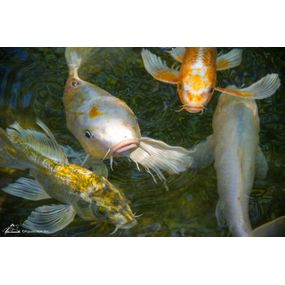
Quite a few of the koi connoisseurs think of butterfly koi as “mutts,” and some say that butterfly koi aren’t even koi. Others, however, happen to think butterfly koi can be the finest koi in any collection, depending on several factors – size, pattern, and finnage.
First, let’s consider where butterfly koi originated. In the early 80s, a population of common, brown and grey carp with long fins were found in a series of canals and ditches in Indonesia. A company in New York took an interest and brought the fish into the U.S. and sold some. They did not sell well because they were ugly. However, an enterprising and curious group of breeders at Blue Ridge Fish Hatchery placed an order for a dozen of these fish to see what the heck they were. Ugly, with long fins, is what they discovered. Over the next several years they bred these large, long finned mutations with their finest regular-fin koi and made several discoveries.
- Long-fin genes are dominant, so breeding the fish back to color would not breed out the long fin gene.
- Long-fin koi are robust and disease resistant.
- The fish could be bred back to color and many colorful lines of long-fin koi have been created at Blue Ridge Fish Hatchery.
The Relation of Size and Value
Butterfly koi seem to lack some of the body size of regular koi, but the overall fish can run as long as 36 to 40 inches in the right pond with plenty of food. They are graceful and pleasant to watch swim.
What About Pattern???
In addition, lemon and platinum ogons (solid color) in the butterfly category are awesome as adults. When you grow a metallic yellow or platinum ogon butterfly to an impressive, large size, their body movement is more graceful and slow. The fins are long, but the uniform gold or neon-white color is brilliant in the water and such fish look like fireballs or comets moving through the water with their “fire” (fins) streaming behind them. Gorgeous!
Notable Butterfly Koi Types:
Even better than that are black butterflies – which are, by far the coolest fish. They are seldom found, so the effect is rare and special when it happens. The black butterfly may be with or without scales. The rarest and most valuable of this type is the doitsu, karasu butterfly. This fish is black, has no scales, and has long fins.
Black Beauties:
And when a visitor to your pond is feeding your fish at the side of the pond, suddenly, a large black shadow looms up from the depths. Larger it gets, until they realize that there is no color, the fish is just a shadow and when the fish takes the food, it turns and swirls down out of sight with a flourish of long, black fins. “What was that?” they usually stammer. “That is the shadow. He’s our black fish, which the Japanese have always regarded as a lucky fish,” you reply. The fully mature black butterfly koi is surely one of the most memorable fish a kid could ever encounter or feed. With such a fish, you own a living breathing shadow dragon.
Oh, Those Fins!
Like any other koi, the fins of the butterfly koi are made up of dozens of rays of cartilage that radiate outward and support the fin. These rays generally grow very straight, but past the point of normal length they can grow wavy. The fish that grow straight rays even into the lengthier parts of the tail are more impressive looking and would be more valuable.
One problem with butterfly koi is that they are often handled the same way as regular koi. Broken fins and tails are par for the course by the time the fish is an adult. So, it’s normal to see bends and waves in the fins and tail of butterfly koi partly because of growing that way, but also because of netting-damage as a juvenile. As an adult, a split tail or fin often does not heal well and remains split. All of the above is irrelevant to the casual observer, the impact of the fish is exactly the same, but you might notice variations in fin quality and you may care enough to choose one fish over the other based on that.
Are Butterfly Koi REAL Koi?
And it has been that way with the butterfly koi. At first, Mr. Suda was the only breeder in Japan producing butterfly koi. His fish have been gorgeous, and he even bred them for prodigious size. But the rest of the Japanese breeders declined.
Mr. Suda’s fish became so popular in the U.S. that they became scarce; making Mr. Suda realize his decision to breed them was a good one. Over time, as other breeders watched Mr. Suda sell everything he had very fast, they eventually overcame their resistance to butterfly koi and started producing them, too. Today, there are domestic breeders who compete in the butterfly koi market. They are very popular fish – and for good reason.
So Now What???
Dreamscapes also carries a full line of pond supplies from water treatments and fish medications to pond pumps, heaters, fountains, plants and fish! Tadpoles and snails are also available at our Aquatic Retail Center in Lebanon, Pennsylvania seasonally while supplies last from May-August. If you think you need it, we have it!
Retail Hours: April 5th-October 27th 2018:
Monday-Wednesday: By Appt
Thursday-Friday: 10am-5pm
Saturday: 9am-12pm
October 28th-April 2019: HOURS BY APPT
Contact Us
2155 State Route 343, Lebanon Pa | 717-272-6555 | [email protected]
Dreamscapes Watergardens services the city of Lebanon, Lancaster, Harrisburg, Mechanicsburg, Camp Hill, Cleona, Cornwall, Fredericksburg, Indiantown Gap, Jonestown, Kleinfeltersville, Mount Gretna, Myerstown, Newmanstown Palmyra, Quentin, Reistville, Richland, Schaefferstown of Pennsylvania, PA

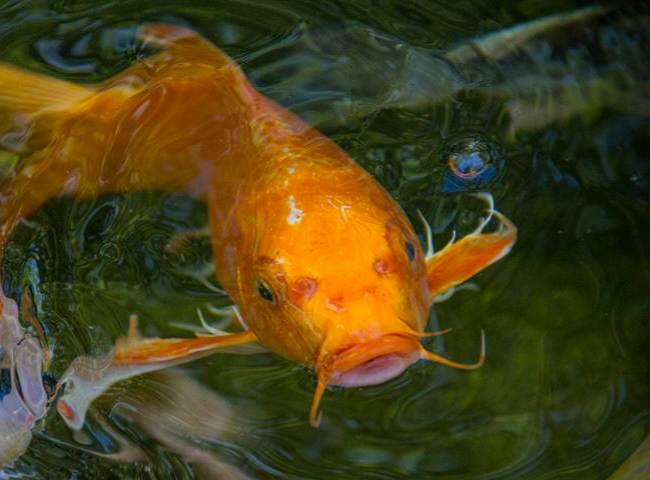
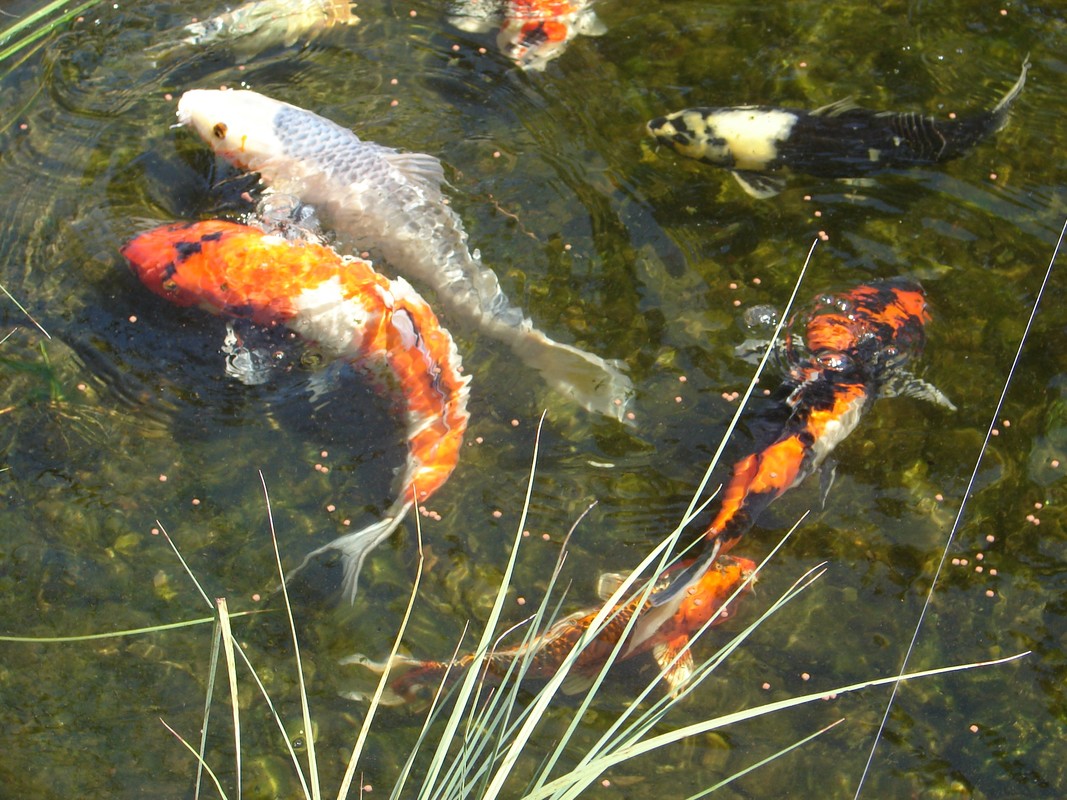
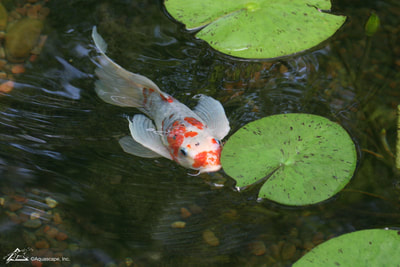
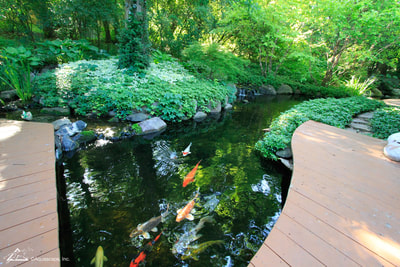
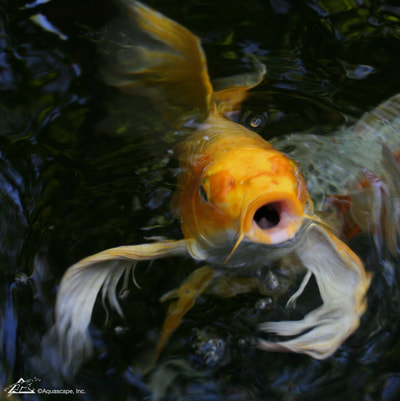
 RSS Feed
RSS Feed









